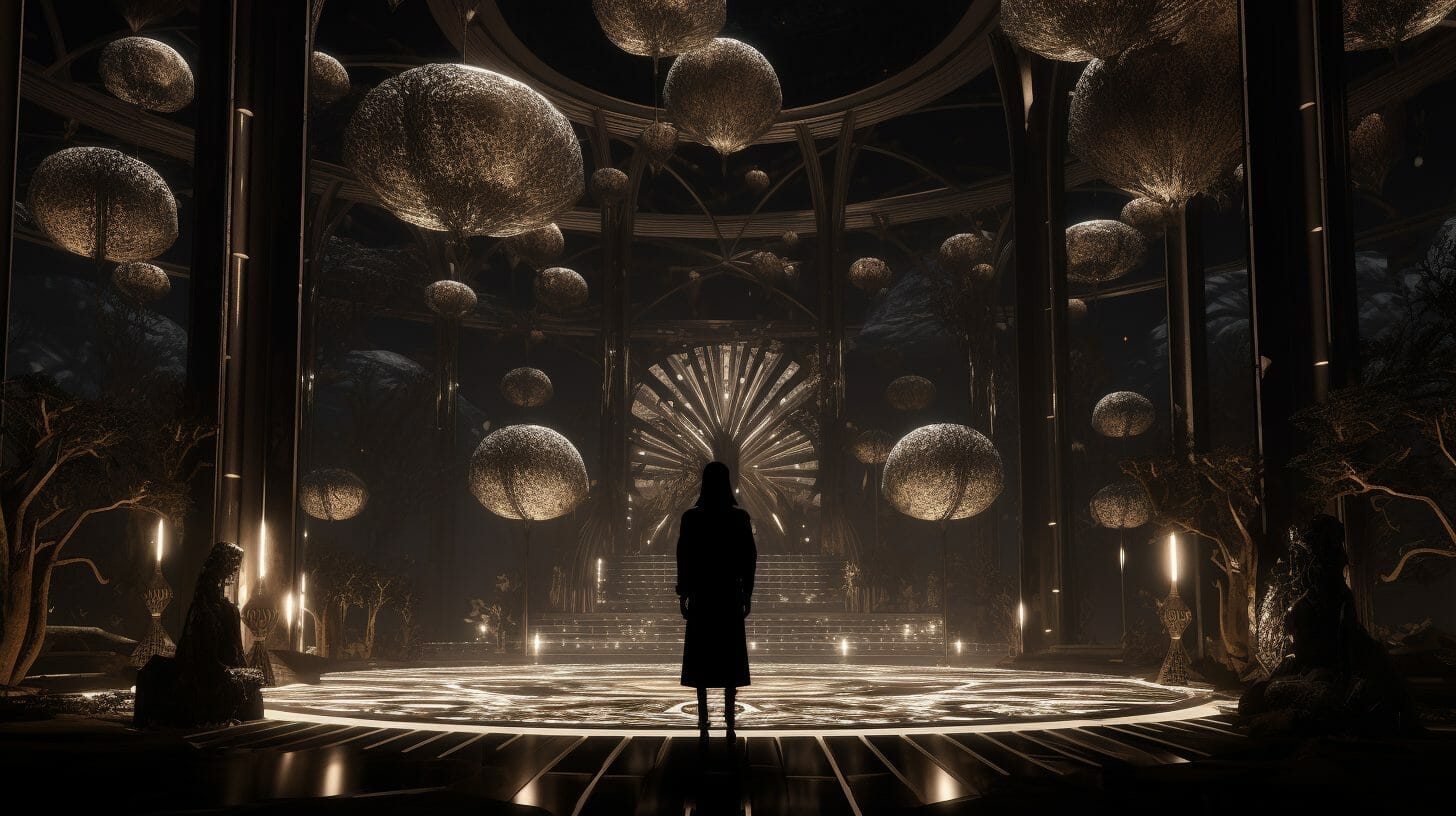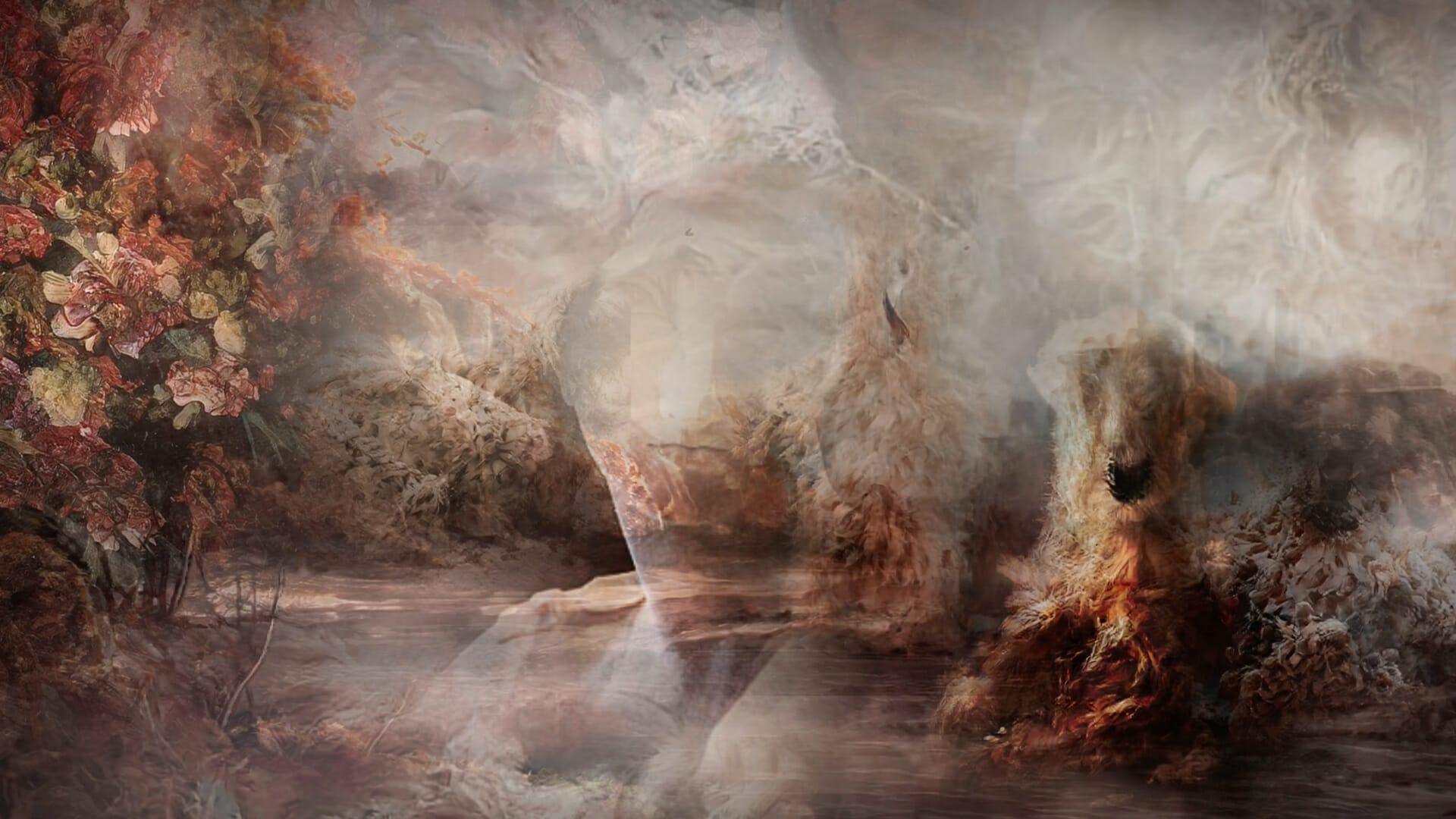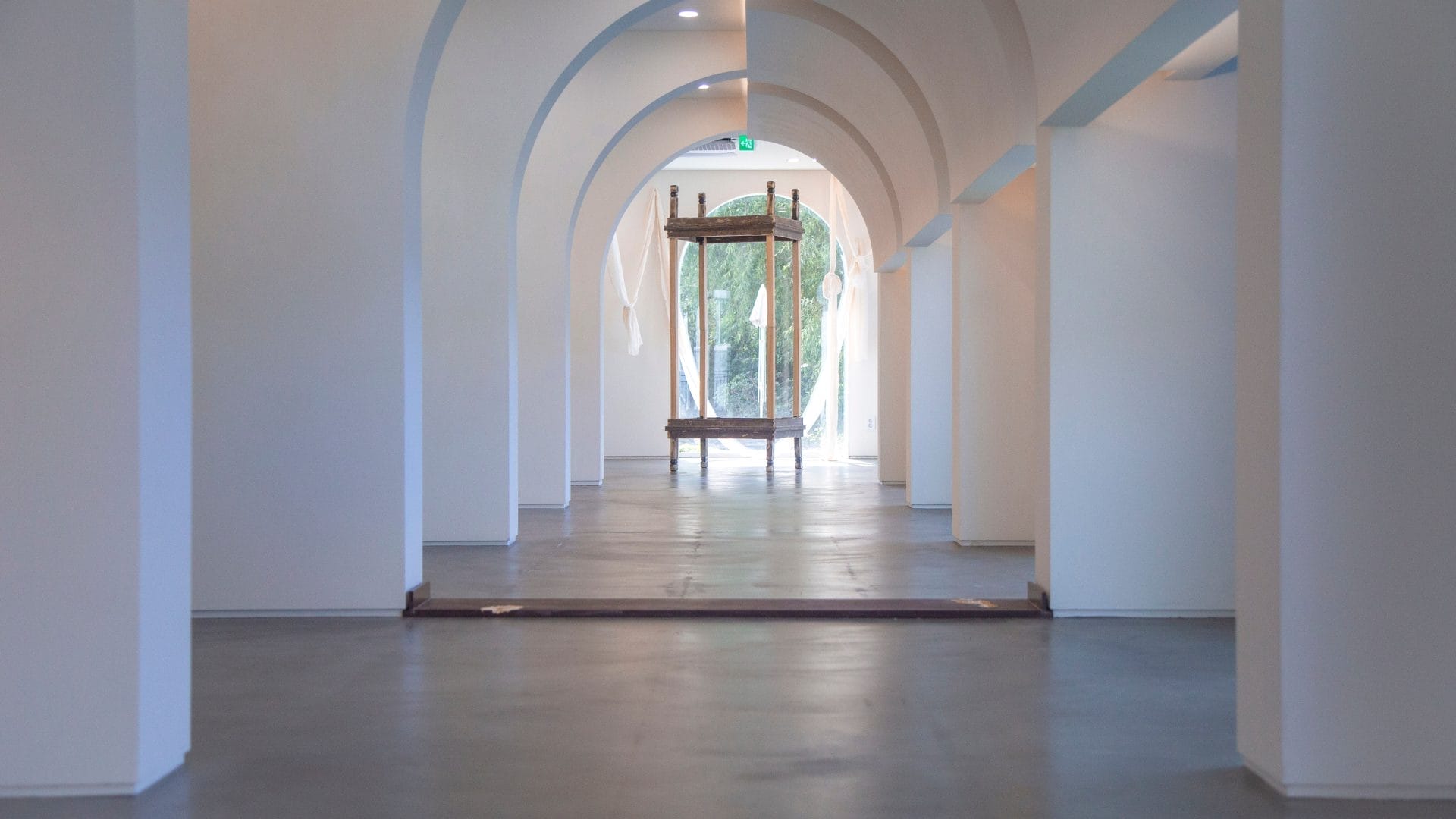
Metaverse Bound: Traversing Alternate Realities through Art
Throughout history, “alternate realities” have woven their way into our artistic and narrative fabric, influencing many cultures and eras. But today, what is the extent to which these realities can actually be defined as “alternate”?
As we delve deeper into the digital age—propelled by advancements in spatial computing and cutting-edge inventions from tech giants like Apple Vision Pro—our understanding and experience of these realities are dramatically transforming.
From “alternate realities” that were separate yet seemingly interconnected, we’re witnessing the rise of something more—an augmented, immersive digital world intricately linked with our own: the dawn of the Metaverse.
By examining this new era, we see that this shared virtual space does not simply reflect our current technological age, but especially the cultural, artistic development that has accompanied it to this day. So, to fully grasp the evolution of what we now call the Metaverse, we must redirect our lens towards the sphere of art.
Acting as a societal mirror, art has reflected reality, challenged paradigms, and often anticipated technological advancements throughout history. It’s no surprise, then, that art plays a pivotal role in the evolution of the Metaverse.
To this end, this article aims to analyze ‘alternate realities’ as we perceive them today, by journeying through their artistic evolution—from their inception, transformation and culmination in the current era, in what is defining the Metaverse.
Early Epochs of Art: Reality Mirrored VS The Inception of Alternate Realities
It is subjective to define “alternate reality” in art and it depends on what we mean by it: generally speaking, any form of art, by its very nature, creates an alternate reality because it represents or interprets the artist’s perception and understanding of the world, which may differ from actual reality.
However, if we are referring to a more clear-cut depiction of an ‘alternate reality’-a world which is quite unlike our everyday experience-we can look to ancient mythological and religious art as a starting point for our exploration.
Ancient Egyptian art, for instance, often depicted an afterlife, revealing a deeply held belief in a spiritual existence parallel to earthly life, providing rich, intricate visions of what such an alternate reality might resemble — a belief in this reality so strong that it heavily influenced their actions, morals, and societal structure.
Later, during the Middle Ages, many artists produced works that were replete with allegory and symbolism, creating layers of meaning that transcended the literal interpretation of the scenes depicted.
It was then during the Renaissance, a period of vibrant cultural, artistic, and intellectual activity, that artists began exploring these alternate realities in novel ways.
Among these, Hieronymus Bosch, at the forefront of this era, unveiled fantastical narratives that bridged the terrestrial and the celestial, with his triptych, “The Garden of Earthly Delights” marking a significant departure from conventional religious depictions. This work, with its shift from Eden to a tumultuous world filled with peculiar creatures, culminating in a haunting dystopian vision, was a seminal exploration of alternate realities within the artistic sphere.
Then the 20th-century Surrealists advanced these explorations, creating dream-like realities that subverted the physical laws governing reality, with artists like Salvador Dalí and René Magritte blurring the boundaries between the dream world and reality.
Dalí’s “The Persistence of Memory”, with its unforgettable image of melting clocks set in a desolate landscape, is a strong example, a provocative work compelling us to question our understanding of time, memory, and reality itself.
Illumined Pleasures, 1929 https://t.co/M514LmW4GW pic.twitter.com/dg03wSblIE
— Salvador Dali (@artist_dali) July 6, 2023
Modern Art Period: Reality Questioned
As the world shifted and society transformed, art, too, underwent significant developments.
At the beginning of the Modern Art Period, artworks as representations of reality came under critical scrutiny and a variety of new movements appeared, challenging the very constructs of reality, bending and reshaping it in unprecedented ways.
This period witnessed the birth of Abstract Expressionism, a movement that distanced itself from literal depictions in favor of emphasizing abstract forms and colors as its primary means of expression, represented by works of artists like Jackson Pollock and Mark Rothko.
Jackson Pollock, White Light, 1954 #museumofmodernart #jacksonpollock https://t.co/mR7nQZFYWE pic.twitter.com/NhcLfbBhGG
— Jackson Pollock (@artistpollock) March 30, 2023
The works served as gateways to alternate realities, realms that were not bound by physical laws, but were linked by emotional resonance, reflecting internal landscapes and subjective experiences, where the viewer was invited to enter and connect with the artist on an emotional level.
Pop Art followed, elevating everyday objects and elements of popular culture to fine art, with artists like Andy Warhol creating an alternate reality that reflected the burgeoning consumerism and mass media culture of the day.
In essence, the Pop Art movement reframed our understanding of what could be considered art, broadening its definition and questioning the elite status often associated with it.
Further stretching the boundaries of reality and art, the realm of Science Fiction and Fantasy Art emerged, with artists such as H.R. Giger presenting viewers with imaginary universes. While radically different from our own, these realities were equally unsettling and provocative, inviting viewers to consider different possibilities, and most importantly, raising questions about human existence, technology, and the future. A new dialogue with our reality.
In line with this evolving tradition, Postmodernism blended styles, mediums, and cultural references, rejecting the idea of an objective, single reality. Instead, they embraced a plurality of realities, each equally valid and authentic, through an approach characterized by synthesis, intertextuality, and the breakdown of high and low culture.
The common thread among these movements is the questioning, criticism, and redefining of reality, thus extending its boundaries — This period of art served as a bridge, connecting the physical, tangible art forms of the past to the ever-expanding, digital realities of our present, ultimately contributing to the artistic landscape of the Metaverse.
Digital Art: Reality Transformed
Our innate desire for novel experiences found a new frontier for exploration with the rapid advancement of technology, resulting in the first forms of digital art. By providing access to classical and contemporary works previously reserved for museums and galleries, the internet began to appeal to our quest for novelty through this new sphere of digital artistry, where artists found a new playground for their creativity.
This marked the genesis of digital art in the 1960s and 1970s when the first experiments with computational technology and graphics were carried out, leading to the movement being recognized in the 1980s and 1990s as the advent of the personal computer led to a broader adoption of digital technologies in art creation.
A number of digital art sub-genres evolved over time due to advancements in computer technology and software, including fractal and algorithmic art, data-moshing, dynamic painting, 2D and 3D digital art, among others — an entirely new artistic landscape that existed independent of the physical world was born, where pixels replaced paints and screens supplanted canvases.
During the same period, the fast-growing gaming industry introduced a novel form of interactive narrative art, and a few years later, titles like “Minecraft” and “Second Life” began to carve out alternate realities where players wielded the power to influence and shape their surroundings — marking the genesis of user-generated content in the Metaverse.
Players were no longer passive spectators but active contributors, co-creating their reality within these expansive digital landscapes.
These early manifestations of the Metaverse have evolved over time, taking us to even more intricate, immersive spaces. For instance, CryptoVoxels, one of the first fully functional Ethereum-based virtual worlds, provided users an opportunity to buy land, build upon it, and sell or trade it within the system, with transactions conducted using cryptocurrencies. This spearheaded the movement towards the fusion of blockchain technology and the Metaverse.
Similarly, Somnium Space emerged as another immersive Metaverse that allows users to interact with each other in a virtual reality environment, own land, and create their own reality, further blurring the line between the digital and physical world.
Decentraland, too, played a crucial role in the advancement of the Metaverse concept. As an Ethereum-based virtual world, it democratized control over its space, paving the way for users to govern its policies through decentralized autonomous organizations (DAOs). The Sandbox, also a blockchain-based virtual world, enabled players to create, own, and monetize their gaming experiences, while simultaneously supporting the creation of non-fungible tokens (NFTs) for in-game assets.
In parallel to the growth of the Metaverse throughout the years, social media platforms including Instagram and Snapchat have pioneered advances in Augmented Reality (AR) introduced AR filters, further revolutionizing our interaction with the digital world on a daily basis — By overlaying digital information onto the physical world, they radically transformed our real-time perception of reality.
At the same time, the rise of Virtual Reality (VR), added to these technologies has left an indelible impact on our engagement with art over the past decade, facilitating immersive experiences that transcend the boundaries posed by traditional art. Coupled with the emergence of NFT technology, digital artists have been further empowered, broadening the possibilities for creation, ownership, and distribution of art in the digital realm.
These parallel developments in technology have resulted in a profound transformation of our understanding and experience of reality, as Art is no longer confined to the physical world, tethered to tangible mediums.
Instead, it has ascended into a realm of limitless digital potential, setting the stage for the next evolution of the Metaverse.
Just in case Bethesda decides to release yet another version of Skyrim for Vision Pro, I made a little volumetric concept in Unity 🙂 pic.twitter.com/hHIOR3c1gX
— 𝐑𝐔𝐁𝐄𝐍🥽𝐅𝐑𝐎 (@Ruben_Fro) June 23, 2023
Current Age: Metaverse and the Advent of Mixed Reality
As we stand on the precipice of the future, the once clear divide between physical and digital reality continues to dissolve, marking the advent of a novel era in art—the Metaverse.
The Metaverse, a term coined from science fiction, is now our evolving reality, a shared collective virtual space birthed by the convergence of a virtually enhanced physical reality and a physically persistent virtual space.
In the canvas of the Metaverse, art takes on a new form, shifting from static observation to dynamic interaction. As an experiential, participatory, and interactive medium, it invites audiences to live within the art.
As a result, artists are now liberated from the constraints of physical mediums and are able to create expansive and immersive digital environments that challenge our understanding of reality and change the concept of an art gallery forever.
The curtain has been lifted. Our Fakewhale VR Program is now LIVE, and we invite you to start experiencing it from its very essence: the FW Vault.
— fakewhale (@fakewhale_xyz) July 19, 2023
The FW Vault represents the expansion of our permanent on-chain collection into a museum embedded in the metaverse, meticulously… pic.twitter.com/CoxzfcDS8D
The line between ‘alternate’ and ‘integral’ has never been more blurred, reflecting the profound influence of the Metaverse on art, technology, and human interaction.
In today’s society, we rely on realities that were once considered ‘alternative’.
And advanced AR technologies, like Apple’s Vision Pro glasses, are set to further catalyze this systematic shift, in what will essentially be an all-encompassing, mixed reality. The definition of the Metaverse distilled to its essence.
Through the early epochs of art that mirrored reality, the modern era that questioned and reframed it, and the digital age that transformed it, we now stand at the dawn of a new chapter in the history of art where the possibilities for artistic expression are essentially limitless.
The experience of Art, as we knew it, will never be the same.
fakewhale
Founded in 2021, Fakewhale advocates the digital art market's evolution. Viewing NFT technology as a container for art, and leveraging the expansive scope of digital culture, Fakewhale strives to shape a new ecosystem in which art and technology become the starting point, rather than the final destination.
You may also like
Laurence Fuller: Leading the Poetic Cinematic Fine Art Revolution
Laurence Fuller is a talented actor, poet, and visionary digital artist that has pioneered the blend
Frenetik Void in Conversation with Fakewhale
Introducing Frenetik Void Artist: Frenetik Void – Birthplace: Buenos Aires, Argentina, 1994 &#
Kay Yoon, Of Hungry Ghosts, Housewives, and Untold Stories at Metal House Gallery, Yangpyeong
“Of Hungry Ghosts, Housewives, and Untold Stories” by Kay Yoon, curated by Joo Ok Han, a
FW LOG is a curated media platform investigating the junction point between technology and art. It provides in-depth insights through the Fakewhale ecosystem, featuring the latest industry news, comprehensive curation, interviews, show spotlights and trends shaping tomorrow’s art market.
Explore the synergy between digital culture and the future of contemporary art.




